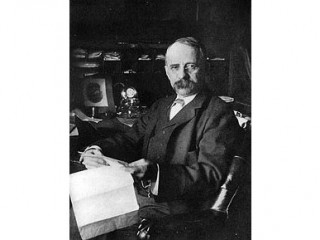
Edward Henry Harriman biography
Date of birth : 1848-02-20
Date of death : 1909-09-09
Birthplace : Hempstead, N.Y.
Nationality : American
Category : Famous Figures
Last modified : 2011-03-09
Credited as : Railroad executive, ,
Edward Henry Harriman, executive of the Union Pacific Railroad, was one of the dominant American figures in that industry in the late 19th century.
Born on Feb. 20, 1848, in Hempstead, N.Y., E. H. Harriman was raised in a relatively affluent environment. Although his father was a clergyman, the rest of the family engaged successfully in business. At the age of 14 Harriman became an office boy in a Wall Street firm. When he turned 21 he borrowed $3, 000 from an uncle and purchased a seat on the stock exchange.
Harriman's first venture in transportation was the modest purchase of a Hudson River boat running between New York City and Newburgh. Mary Williamson, whom he married in 1879, was the daughter of the president of an upstate New York railroad. From this time Harriman began rebuilding bankrupt railroads in that region.
In 1883 Stuyvesant Fish, vice president of the Illinois Central Railroad, secured a seat for Harriman on the board of directors, and when Fish moved to the presidency in 1887, Harriman became vice president. Through Harriman's brilliant financial acumen the Illinois Central survived the devastating depression of the 1890s.
During this period Harriman was also eyeing the Union Pacific Railroad. When the line went into receivership in 1893, Harriman joined the reorganization syndicate. Four years later he gained a seat on the board of directors. He soon was made chairman of the executive committee, becoming, in effect, the voice of the Union Pacific. Harriman moved first to restore the physical condition of the road. He also gained control of two Oregon railroads and thus ensured the Union Pacific an entrance to Portland. He then turned his attention to California. A golden opportunity arose in 1900, when the Southern Pacific Railroad holdings were put up for sale. Harriman purchased enough securities to control the vast transportation network operating along the entire Pacific Coast and east to New Orleans.
Meanwhile, Harriman wanted to extend the eastern terminus of the Union Pacific, then at Omaha, to Chicago. He attempted to gain control of the Chicago, Burlington and Quincy Railroad but ran headlong into James J. Hill of the Great Northern Railway. Harriman, backed by the Kuhn-Loeb financial group, and Hill, supported by financier J. P. Morgan, battled for stock control. The antagonists eventually agreed to create a holding company, the Northern Securities Company, which was to control a vast majority of the railroads west of the Mississippi River.
To their surprise, U.S. president Theodore Roosevelt instigated an antitrust suit against Northern Securities. In 1904 the Supreme Court ordered the company dissolved. Harriman suffered another setback when, in 1906-1907, the Interstate Commerce Commission's investigation revealed his part in a group of "robber barons" who had set about to financially destroy the Chicago and Alton Railroad.
Harriman also dabbled in steamships, banks, and insurance companies. In 1899 he organized and accompanied a research expedition to Alaska. He was also active in New York boys' club work. In 1885 he began buying acreage in Orange County, N.Y., for the purpose of preserving forest lands; some 20, 000 acres plus funds to purchase additional tracts were given to the state to create Harriman Park, now over 45, 000 acres in extent.
Harriman was the father of six children, the most famous of whom was W. Averell Harriman.
















